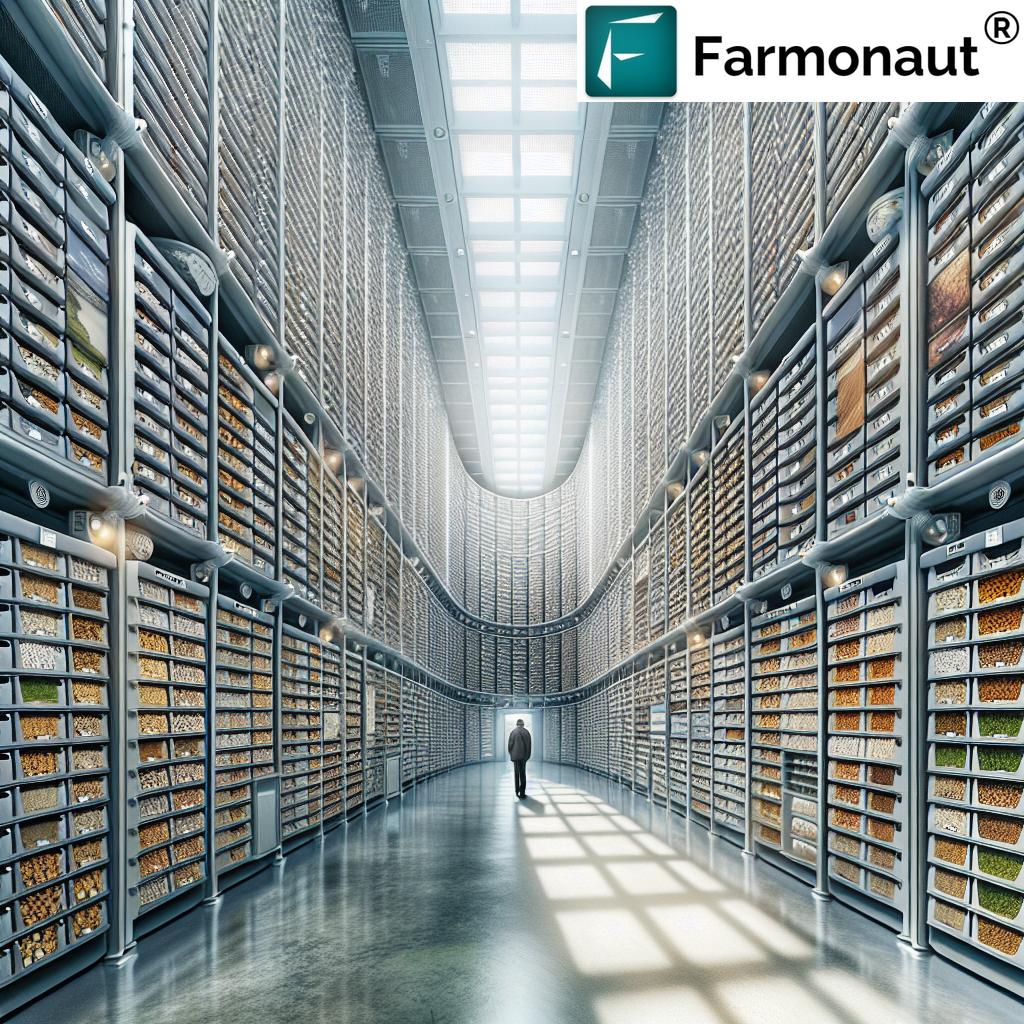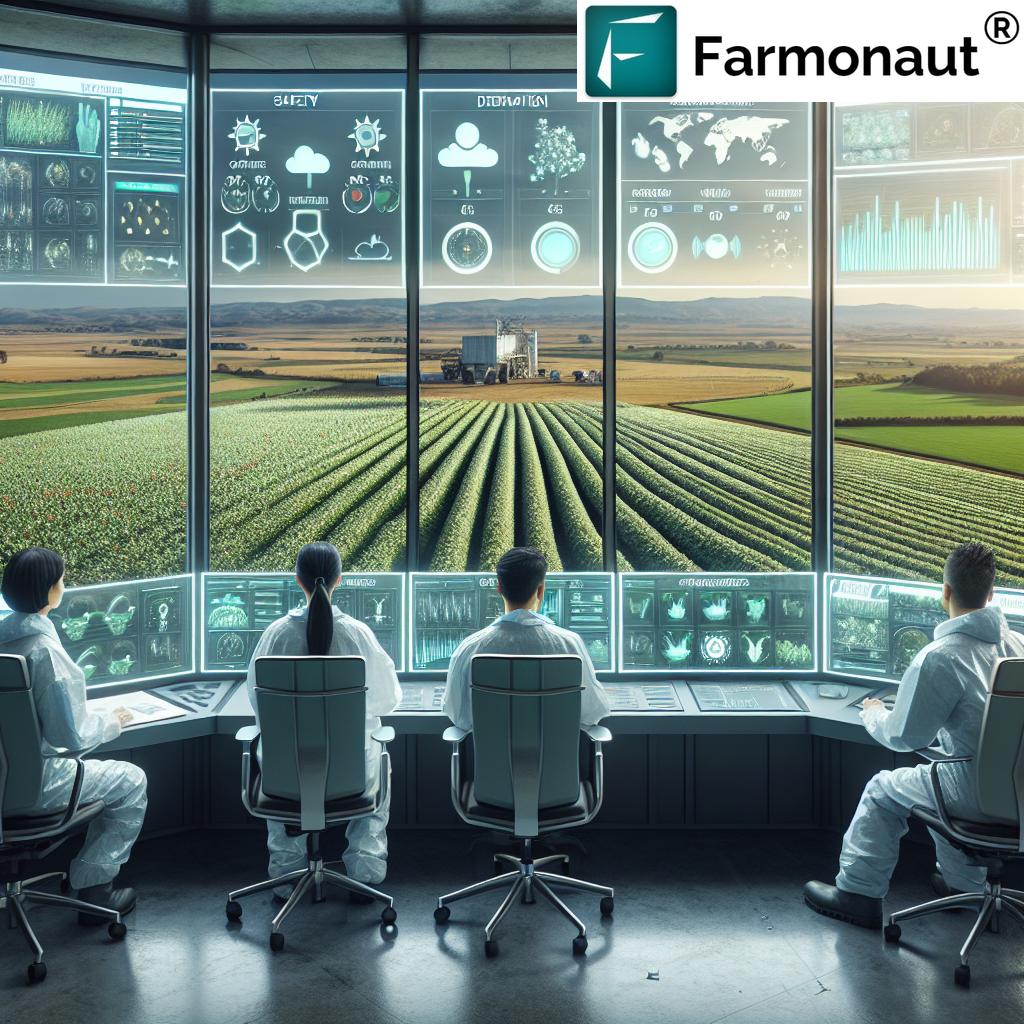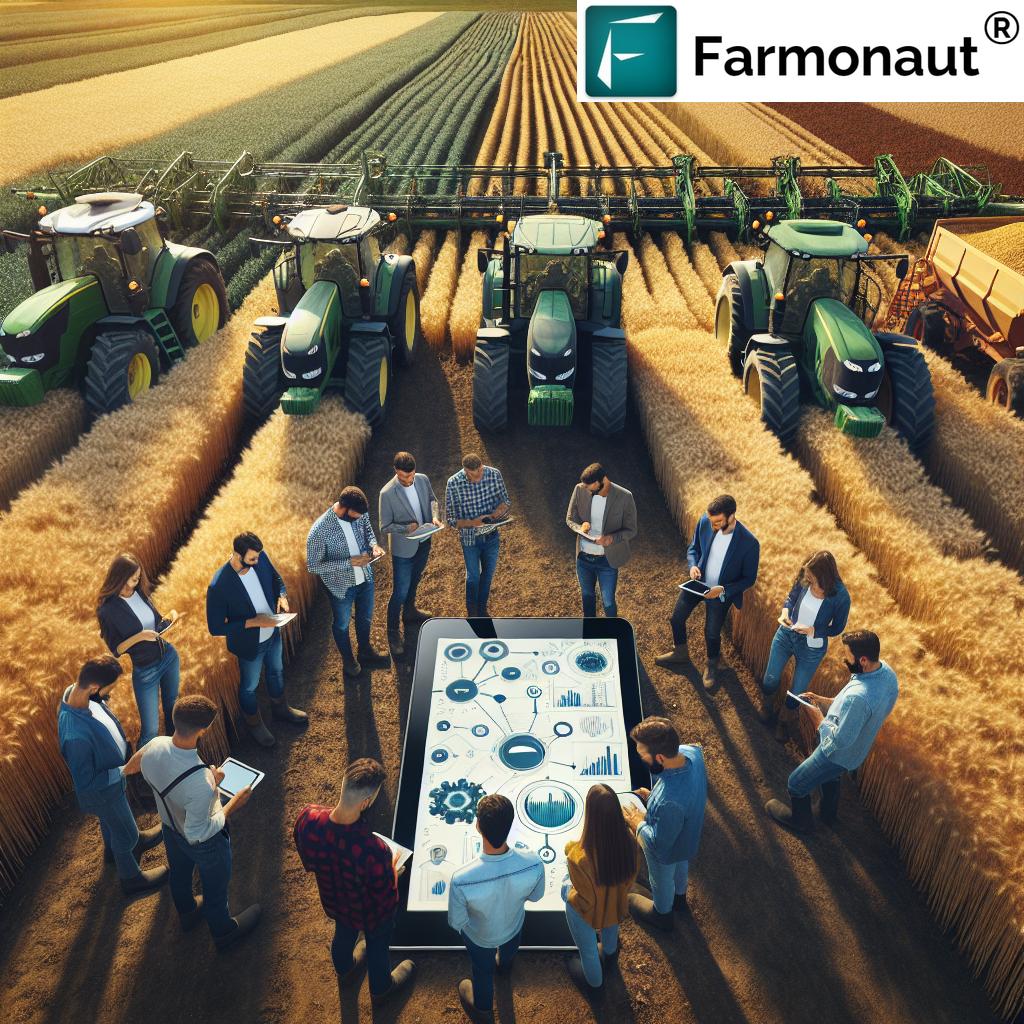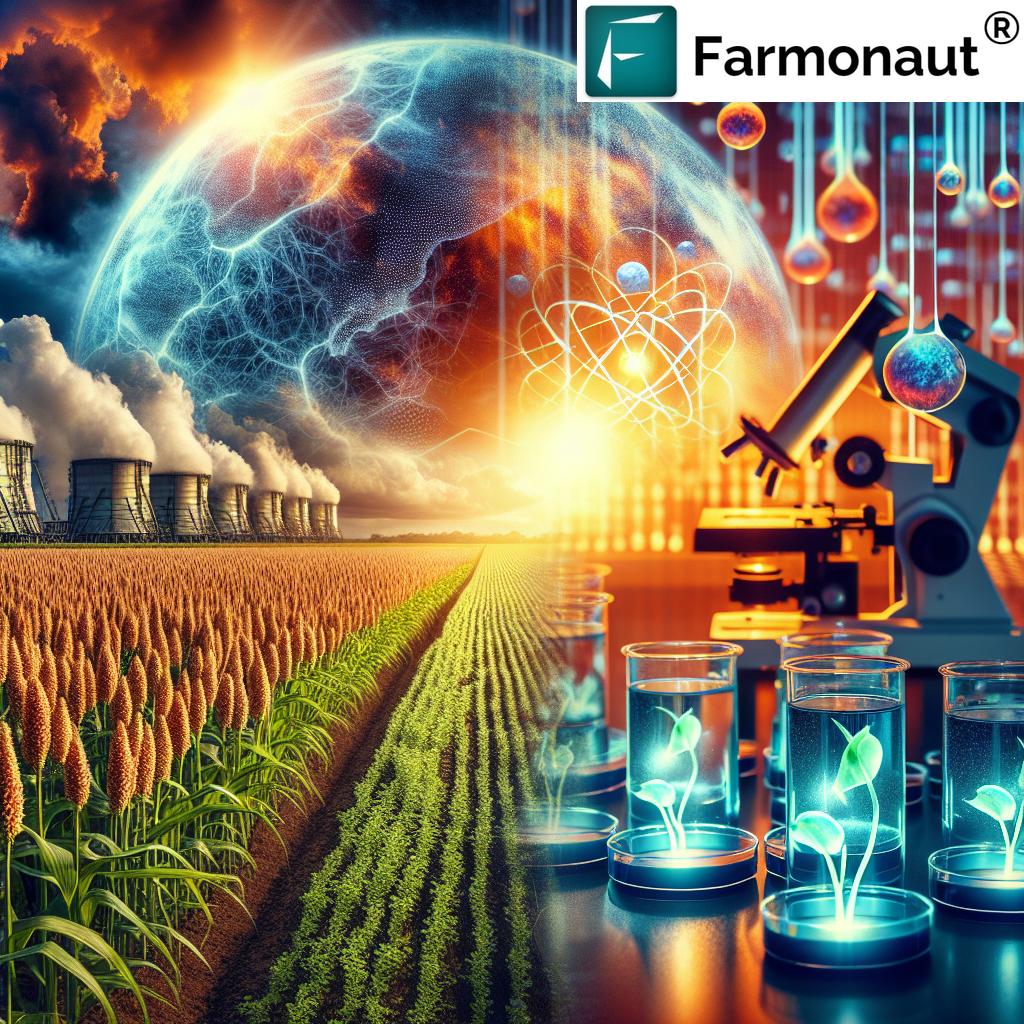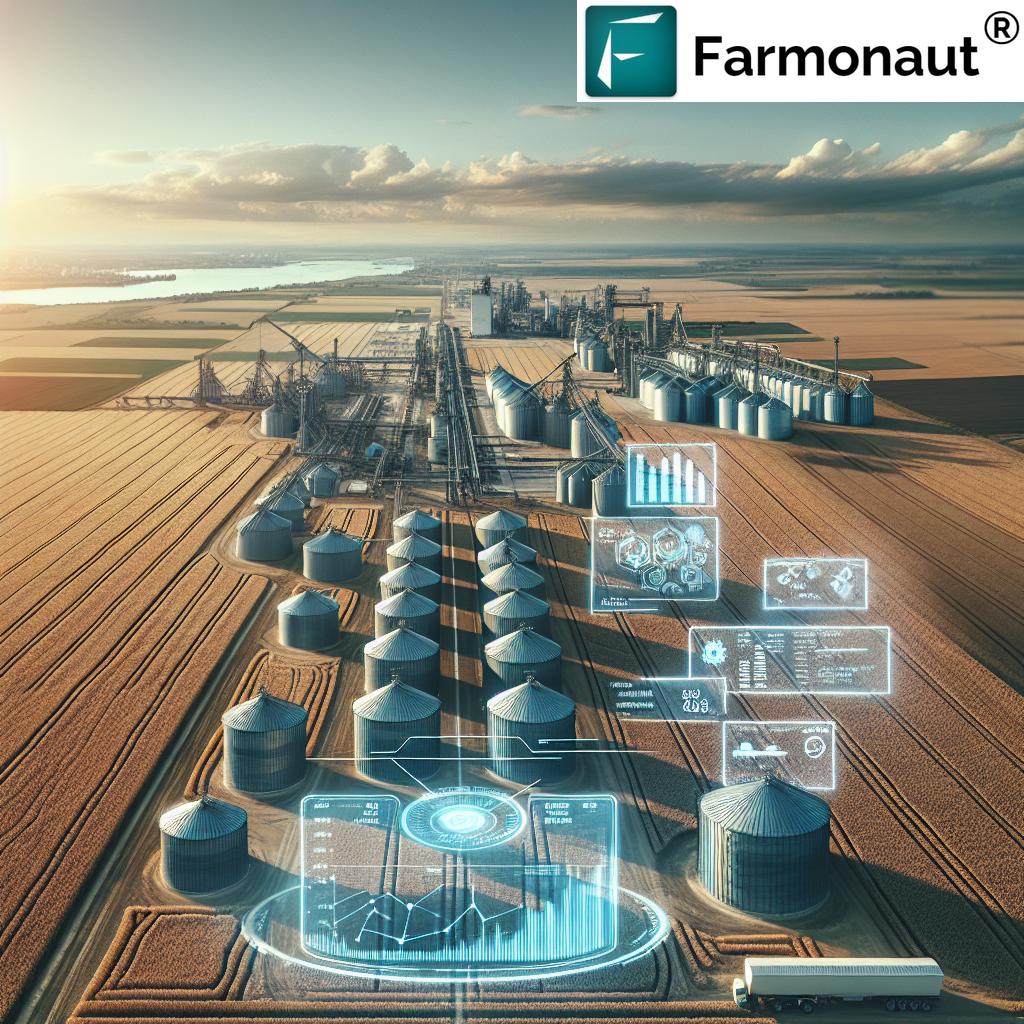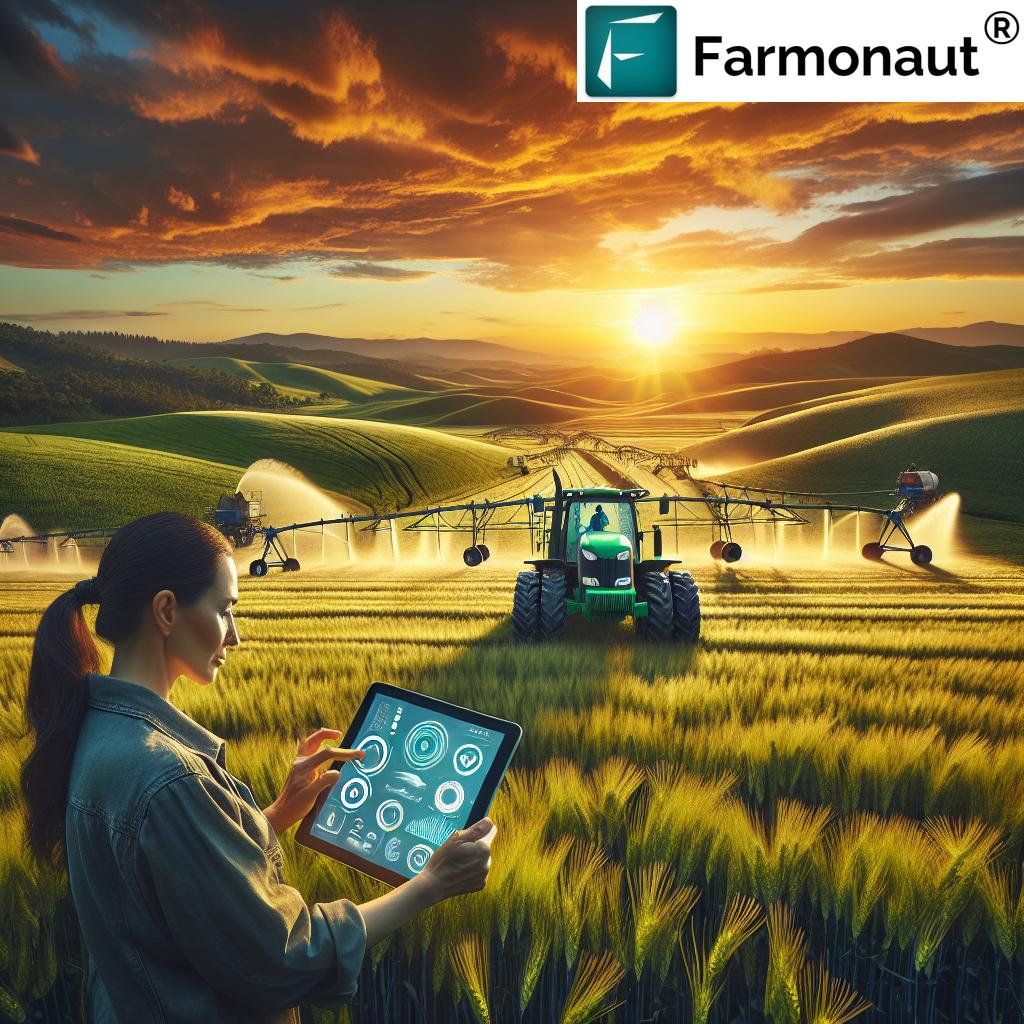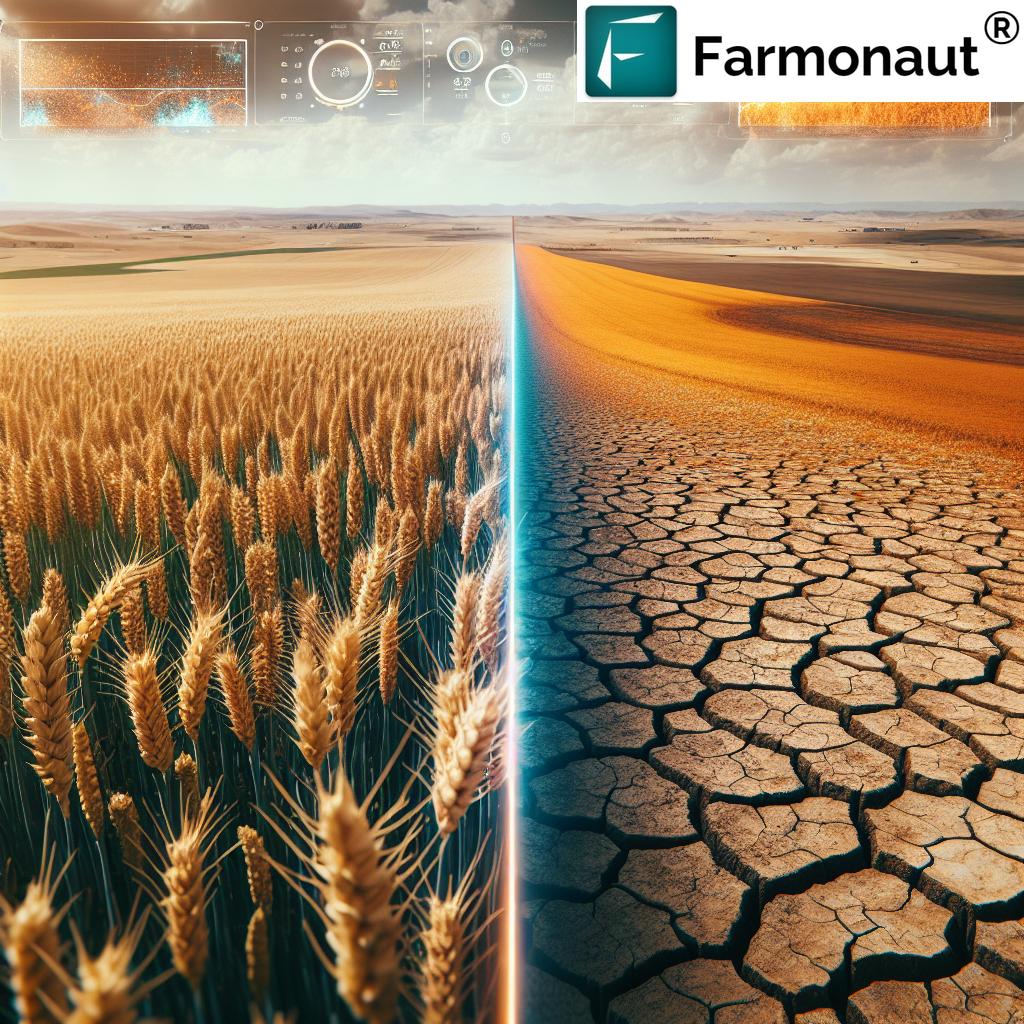Amid Climate Crisis: Svalbard Global Seed Vault Safeguards
Table of Contents
- Introduction – Seed Vault: A Beacon Amid Climate Change
- Purpose and Functionality of the Svalbard Global Seed Vault
- Design, Location, and Security Features
- Deposits, Diversity, and Global Participation
- Seed Vault’s Role in the Climate Crisis
- Challenges from Climate Change and Vault Adaptation
- Food Security, Crises, and Genetic Resource Access
- Major Crop Seed Varieties Preserved at Svalbard vs. Global Dependence (Table)
- Farmonaut: Precision Agriculture & Sustainability Solutions
- Recent Developments in the Svalbard Seed Vault
- Frequently Asked Questions
- Conclusion: Safeguarding Tomorrow’s Harvests
“The Svalbard Global Seed Vault stores over 1.2 million seed samples from nearly every country worldwide.”
Introduction – Seed Vault: A Beacon Amid Climate Change
In the far northern reaches of Norway, deep inside a frozen mountain on Spitsbergen Island in the Arctic region, stands the formidable Svalbard Global Seed Vault. Often called the “Doomsday Vault,” this facility plays a pivotal role in safeguarding global seed diversity and preserving agricultural biodiversity against the growing threats posed by climate change and food security challenges. As our planet faces rising temperatures, increased rainfall, and frequent natural disasters, the security of our food resources and the genetic future of our crops become more fragile than ever before.
Throughout human history, civilizations have thrived or faltered based on their access to resilient and diverse crops. Today, our interdependent world faces significant challenges: wars, conflicts, environmental degradation, pandemics, and funding cuts threaten the foundation of global agriculture. It is within this context that the Svalbard Global Seed Vault offers hope—ensuring a secure, stable supply of crop seeds for our future, whatever crises may arise.
Purpose and Functionality of the Svalbard Global Seed Vault
The seed vault was conceived as a critical safeguard for global seed diversity, ensuring that humanity always has access to the broadest possible array of genetic resources for agriculture. Let’s explore its core purposes:
- Acting as a global backup for the world’s gene banks by storing duplicate seed samples safely away from national and international repositories that might be at risk.
- Preserving agricultural biodiversity in the face of climate change, natural disasters, war, sabotage, and equipment or funding failures.
- Ensuring food security by providing a reservoir of seeds for future generations and for crop breeding programs as our climate changes and agricultural conditions shift.
- Supporting international cooperation by welcoming deposits from genebanks, institutions, and indigenous communities across the world.
Operated by the Norwegian government and managed in collaboration with the Crop Trust and the Nordic Genetic Resource Center (NordGen), the Seed Vault is a neutral, apolitical space: it is a global insurance policy for our food systems.
Design, Location, and Security of the Svalbard Seed Vault
The design and location of the Seed Vault in Svalbard are deliberate choices rooted in science, engineering, and careful foresight. Here is what makes this arctic seed storage facility unique:
- Situated deep inside a mountain on Spitsbergen Island, well above sea level, the Seed Vault leverages both natural and engineered protection. Its remote position makes it less vulnerable to human and environmental threats.
- Surrounded by permafrost, the natural, subzero environment helps maintain low temperature stability, ensuring the long-term viability of the stored seeds even if mechanical systems fail.
- The structure is engineered to withstand various global catastrophes, including rising sea levels, earthquakes, nuclear fallout, or civil unrest. Its entrance and tunnels have been further fortified to resist water intrusion after the 2016 incident.
- The remote and stable environment in Svalbard was specifically chosen because it is geologically and politically stable, insulating the vault from many of the world’s risks.
This combination of engineering, climate, geography, and international stewardship makes the Svalbard facility a true fortress for the preservation of our agricultural future.
“Located in the Arctic, the vault can withstand natural disasters and rising sea levels, preserving seeds for centuries.”
Deposits, Diversity, and Global Participation in the Seed Vault
One of the greatest strengths of the Svalbard Global Seed Vault lies in its truly global participation. The facility does not just serve as a Norwegian project; it is a repository for duplicate seeds from various national and international gene banks, research institutions, and indigenous communities across the world.
- As of June 2025, the Svalbard vault conserves over 1.3 million seed samples, representing over 13,000 years of agricultural history.
- Depositors include international genebanks, national seed banks, NGOs, and indigenous groups. These organizations retain ownership, while Svalbard acts as the ultimate backup in case of crises or disasters.
- October 2024: More than 30,000 new samples were received from 23 depositors across 21 countries—demonstrating ongoing commitment to protecting seed diversity in an era of mounting climate change and threats to agricultural systems.
- New depositors, such as those from Bangladesh, Bolivia, Chad, Nigeria, Papua New Guinea, and Suriname, underscore the Seed Vault’s inclusive, international mission (source).
Every deposit is a testament to international cooperation, trust, and our shared responsibility to conserve the genetic blueprint of our most essential crops for present and future generations.
The Seed Vault’s Role in the Climate Crisis and Food Security
As the climate crisis accelerates, with increased rainfall, droughts, floods, sea level rise, and new pests, the threat to global food security intensifies. The Svalbard Seed Vault is more than an insurance policy; it is an active guardian in the fight to sustain agriculture under rapidly changing conditions.
- Climate change impacts on crops are already being felt globally—altered growing seasons, crop failures, and increased disease pressure threaten food supplies.
- Safeguarding world crops at Svalbard ensures we have the genetic resources for agriculture required to develop new, resilient crop varieties for the future.
- Diverse seed collections allow plant breeders, researchers, and farmers to access traits like drought tolerance, flood resistance, and pest immunity—essential for adapting to changing conditions.
- In times of conflict, war, or natural disaster, Svalbard provides a last-chance recovery point for replanting lost seed collections worldwide.
This is the essence of crop preservation: protecting the building blocks of our food systems so that we can respond rapidly and effectively to environmental and political shocks—helping us withstand global catastrophes.
Challenges from Climate Change and Vault Adaptation
While the Svalbard facility is an engineering marvel designed to be secure and stable, it is not immune to the growing pressures of climate change in the Arctic region:
- In 2016, already warmer Arctic temperatures and unusually heavy rainfall led to water ingress at the tunnel entrance. While the water froze before reaching the seeds, the incident highlighted the reality of climate-induced threats so far north.
- Melting permafrost now threatens previously “permanent” environmental features, impacting local wildlife, landscapes, and infrastructure like the Vault itself.
- Significant upgrades have since been made: a waterproof concrete tunnel was constructed, drainage was improved, and environmental monitoring was intensified to mitigate future climate risks (source).
The Vault’s ability to adapt its design and management in response to climate science is central to its ongoing value as a safeguard for crop genetic diversity and humanity’s food security.
Learn how Farmonaut’s carbon footprinting solution can help agribusinesses minimize their environmental impact and monitor emissions, promoting sustainability in agriculture on a global scale.
Global Food Security, Crises, and Access to Genetic Resources
No single country or institution can guarantee food security alone. The Svalbard Vault’s contribution comes into sharp focus each time the world faces crises:
- Political conflicts and war have destroyed key gene banks in Syria and elsewhere—demonstrating why secure backup in a remote, stable environment is crucial.
- Natural disasters—hurricanes, earthquakes, floods—can wipe out entire collections. The Vault serves as a comeback point for nations to regain access to seeds and restore their agricultural capacity.
- Changing climate conditions require a continuous supply of diverse seed traits for crop improvement; Svalbard provides access to this global diversity pool.
- Resource constraints, such as funding cuts or mismanagement, threaten existing seed banks. Svalbard’s enduring trust enables recovery should these threats materialize.
Thus, the Seed Vault is vital not only in times of catastrophe but as a facilitator of routine, international crop improvement—making sure we can always respond to threats and adapt agriculture for climate change and food security.
Explore Farmonaut’s blockchain-based traceability platform—ensure your agricultural supply chain remains transparent and consumers can trust the authenticity and origin of food products even in a complex, crisis-prone world.
Major Crop Seed Varieties Preserved at Svalbard vs. Estimated Global Dependence
To fully understand the significance of the Svalbard Seed Vault, consider the crops and their varieties stored within versus their importance to the world’s food supply. This comparison illustrates both the capacity of the Vault and the stakes for global nutrition and adaptation.
| Crop Name | Estimated Number of Seed Varieties Stored | Global Food Supply Dependence (%) | Primary Regions Cultivated |
|---|---|---|---|
| Wheat | ~200,000 | 20% | Europe, Asia, North America, Australia |
| Rice | ~150,000 | 19% | Asia, Africa, Latin America |
| Maize (Corn) | ~140,000 | 15% | Americas, Sub-Saharan Africa, Asia |
| Potatoes | ~80,000 | 9% | Europe, South America, Asia |
| Soybean | ~100,000 | 7% | Americas, Asia, Africa |
As seen in this table, the Svalbard Vault is not just a storage chamber—it embodies our collective resilience, preserving the diversity of crops that feed billions and ensuring both present and future food security.
Farmonaut: Precision Agriculture and Sustainability Solutions
To complement efforts like seed banking and genetic resource conservation, precision agriculture plays a crucial role in helping farmers adapt to climate change, optimize resources, and enhance productivity.
Farmonaut is a pioneering agricultural technology company making precision agriculture affordable and accessible to farmers worldwide through its satellite-based crop management platform.
- Satellite-Based Crop Health Monitoring: By leveraging multispectral imagery, Farmonaut provides real-time insights on crop health, soil moisture, and vegetation vigor—enabling farmers to respond rapidly to issues and optimize input use.
- Jeevn AI Advisory System: Delivers personalized, AI-driven crop management advice that improves decision-making and maximizes farm efficiency, especially under variable climatic conditions.
- Blockchain-Based Product Traceability: Ensures farm-to-consumer transparency, helping to secure trust and reduce supply chain vulnerabilities through tamper-proof records (learn more about Farmonaut Traceability).
- Fleet and Resource Management: Streamlines operations for large farms and agribusinesses through efficient tracking and resource allocation, reducing costs and environmental impact (read about Fleet Management).
- Carbon Footprinting: Monitors and minimizes agricultural emissions for more sustainable business practices.
- Scalable, Accessible Platform: Farmonaut’s web, Android, and iOS apps (and APIs for developers) make advanced farm management accessible from any device in any region.
Farmonaut’s services empower individual farmers, agribusinesses, governments, financial institutions, and NGOs to build resilience against climate and market risks while supporting sustainability and responsible resource use.
If you are a plantation manager or administrator handling extensive croplands or forested areas, Farmonaut’s dedicated large-scale farm management toolkit enables you to monitor health, track changes, and manage logistics efficiently at any scale.
If you are seeking crop loan or insurance verification, Farmonaut offers satellite-based tools to reduce risk and speed up approvals: Smart Crop Loan and Insurance Verification.
Recent Developments and the Road Ahead for Svalbard Global Seed Vault
- October 2024 Historic Deposit: The Vault received over 30,000 new seed samples, boosting its role in global crop preservation even as threats multiply.
- Funding and Support: Crop Trust calls for expanded funding to ensure both maintenance and expansion of global crop gene banks and the Svalbard Vault. This is vital for ongoing adaptation to climate change and emergent crises.
- Food Stockpiling: In response to the pandemic and geopolitical instability, Norway has increased grain stockpiling investments, underscoring the global trend toward resilience in food systems.
These developments reveal the dynamic, evolving nature of seed conservation efforts in an uncertain world. The Svalbard Vault continues to be upgraded and populated to reflect new scientific data and global realities.
Frequently Asked Questions (FAQ)
What is the Svalbard Global Seed Vault?
The Svalbard Global Seed Vault is a secure, deep arctic storage facility in Norway, designed to safeguard the genetic diversity of the world’s crops. It acts as a global backup for seed collections in case of natural disasters, war, or climate-related disruptions.
How many seed samples does it hold?
As of June 2025, the Vault stores over 1.3 million samples from nearly every country worldwide—including key crops like wheat, rice, maize, potatoes, and soybean.
Who can deposit seed samples?
International and national gene banks, indigenous communities, governments, and research institutions are eligible to deposit backup seed collections. Each depositor retains legal ownership of its seeds.
How does the Vault address the risk of climate change?
The Vault’s remote location and design (deep inside an Arctic mountain, surrounded by permafrost) provide stable, cold conditions for long-term seed preservation. Adaptations, like waterproofing and new tunnels, have been made in response to increased rainfall and permafrost melt.
Is the Vault ever used to restore lost seed collections?
Yes. The Vault has supplied backup seeds to countries whose national collections have been damaged or lost due to war or natural disasters, underscoring its critical role in global food security and recovery.
How is Farmonaut related?
Farmonaut is not a seed vault, but provides technology for satellite-based crop monitoring, precision agriculture, traceability, and sustainability. These services help keep agriculture productive and resilient, complementing the global food security goals supported by seed banks like Svalbard.
Conclusion: Safeguarding Tomorrow’s Harvests
The Svalbard Global Seed Vault is more than a storage chamber in the Arctic; it is a symbol of hope, resilience, and international responsibility. As climate change, conflicts, and natural disasters threaten global seed diversity, Svalbard’s ongoing mission to conserve the world’s genetic resources for agriculture becomes ever more critical.
At a time when food security is under constant threat, the Vault reassures us: humanity has a plan to withstand the unpredictable. By embracing sustainability, investing in technology-driven agriculture (through platforms like Farmonaut), and supporting efforts like Svalbard’s, we collectively work to ensure that sustainable food systems remain within reach for all—now and for generations yet to come.
Let us continue to invest in, support, and innovate for the preservation of agricultural biodiversity—and recognize the Svalbard Global Seed Vault as a cornerstone in the fight for a food-secure, climate-resilient future.






